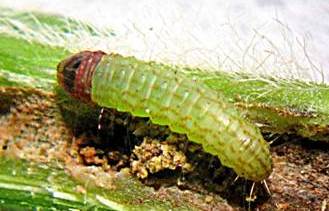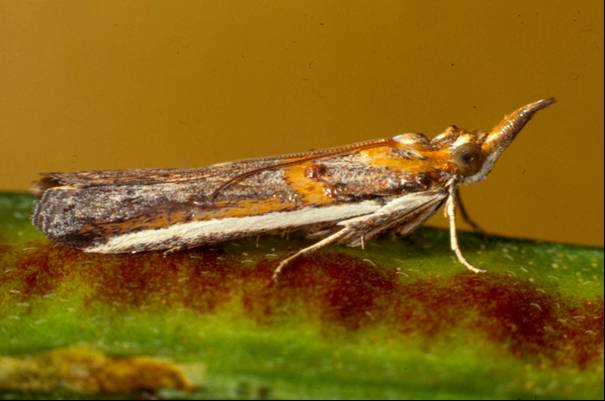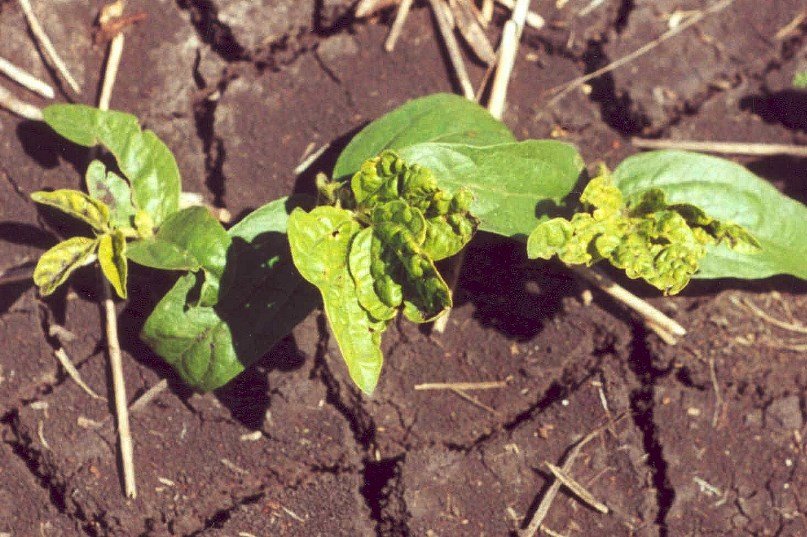There is an understandable level of concern about how best to manage etiella (Etiella behrii) in summer mungbean crops following the unexpectedly high etiella infestations (and corresponding seed damage and contamination) in spring mungbean crops on the Downs and in Central Queensland and North Western New South Wales. Responding to the etiella threat without reacting prematurely and creating more pest… Read more »
A significant etiella outbreak was recently reported in pod-filling mungbean in the Moree region of North Western NSW. In this particular crop, it is estimated that etiella larvae have infested pods on 50% of plants. Etiella eggs, at low densities, were also recently observed in an early flowering crop near Bungunya (west of Goondiwindi, Qld).
There have been several reports of seedling thrips in spring mungbean crops in the Goondiwindi region. Seedling thrips (Thrips tabaci) are also known as winter cereal thrips or cotton seedling thrips. The thrips move out of winter cereals when these start to dry off into new green spring growth such as mungbean, navy beans or cotton. Spring planted crops, especially… Read more »
Background: Significant etiella outbreaks have recently been reported in soybeans and mungbeans on the Darling Downs, in the South Burnett (SE Qld) and in the Moree and NorthernRivers regions of NSW. In some soybean crops on the Downs, 100% of plants were infested and 72% of axilliary buds damaged to varying degrees. These outbreaks are similar but more widespread than… Read more »
Large numbers of different spotted larvae have recently been observed in many mungbean crops. The spotted larvae of the bean pod borer remains a significant pest of mungbeans yet the spotted fungus eating ladybird larvae poses no threat to crops. In recent years, significant populations of bean podborer larvae (Maruca vitrata) have been reported in crops as far west as… Read more »
Severe and sustained bean podborer (Maruca vitrata) outbreaks were widely reported in mungbeans over the past 2 summers.. Populations in excess of 100 larvae per square metre were observed in many crops. If left uncontrolled such populations not only impact on crop yield by reducing pod set, they also severely damage the pods that are set and delay harvest maturity…. Read more »
Damaging bean podborer (Maruca vitrata) populations of up to 100+ larvae/m2 have been observed in flowering and podding mungbeans in the South Burnett, Dawson Callide and Central Highlands. Although podborer is not an uncommon pest in these regions during wet summers, very high populations can inflict devastating damage with zero pod set observed in some crops where the pest is… Read more »
Two spotted mites (TSM) or red spider mites have been reported in damaging numbers in many mungbean crops on the Darling Downs and in Northern NSW. Crops at particular risk are those adjacent to maturing cotton (or any other mite hosts) from which mites are dispersing in large numbers. As TSM are very small (0.5 mm) the first evidence of their… Read more »
Mirids can cause significant crop losses in mungbeans with yield reductions of up to 25-50% common where high mirid populations (eg 10/m2) are left uncontrolled. Mirids can reduce yields by 60 kg/ha for every mirid/m2 of crop. Mirids can be present in mungbeans at any stage from seedlings to podding. Budding, flowering and early-podding crops are at greatest risk. Low… Read more »
Revised thresholds for helicoverpa in flowering/podding mungbeans are based on a rate of damage of 35 kg/ha per larva per square metre in podding crops. The new thresholds are nearly double the old threshold of 1/m2, and make allowances for variations in control costs and crop value. For a typical scenario with pesticide control (including aerial application) costing $40/ha and… Read more »



